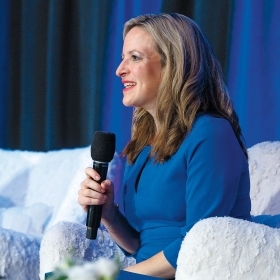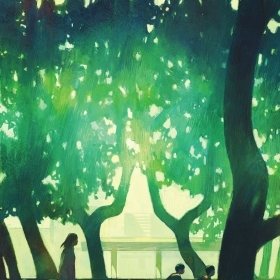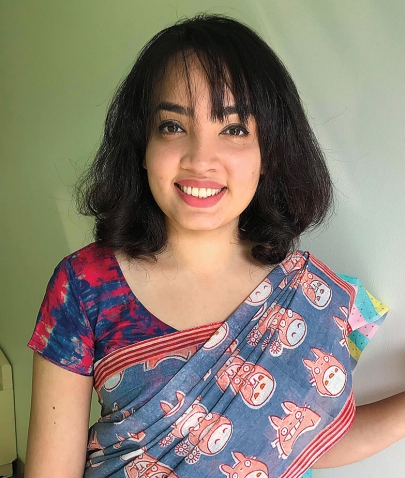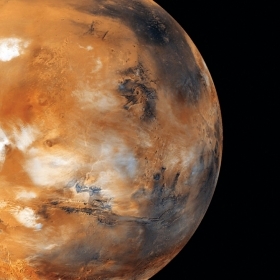Like many science-inclined students, Lamiya Mowla ’13 arrived at Wellesley intending to become a doctor. But an introductory astronomy lesson altered her ambitions—and the course of her life.
During a nighttime session in the Whitin Observatory, an instructor trained a telescope on Saturn, and Lamiya peered at the planet’s gas rings.
“It was so mesmerizing,” she says. “My world just opened up.”
Usually an early riser, Lamiya was soon spending her nights in the observatory studying the cosmos and pondering its many mysteries, including what she calls “the big question: Where do we come from?”
She continues to look for the answer. Lamiya is now a postdoctoral fellow at the Dunlap Institute for Astronomy and Astrophysics at the University of Toronto, a position she accepted two years ago after completing her graduate studies at Yale. As an observational astronomer, she studies the structural evolution of galaxies since the universe’s inception.
Using a combination of direct observation and computer simulations, Lamiya spends her days probing such head-spinning topics as why the Milky Way formed when it did and how Earth’s galaxy compares to the 2 trillion others in the universe.
It was these specialties that made her perfectly suited to help analyze the first dispatches from the James Webb Space Telescope that NASA released earlier this year. Lamiya is a member of several teams working to unravel the reams of data transmitted from the agency’s $10 billion infrared telescope orbiting more than 1 million miles from Earth. A successor to the aging Hubble telescope, Webb offers astronomers the most exciting research opportunities in a generation—a chance Lamiya does not take for granted.
“I have so much data at my fingertips,” she says, “but 90% of the world doesn’t have access, because science is still being done by the West putting money into big programs.”
The experience of growing up in Dhaka, Bangladesh—and later organizing science outreach programs for students in rural parts of the country—has made Lamiya acutely aware of the chasm between scientists’ celestial explorations and the public’s understanding of outer space. She feels a responsibility to make her research accessible to all and is part of a new constellation of academics working to democratize astronomy by pushing for freely available data, software, and coding tools. The sky belongs to everyone, she reasons, so everyone should have access to its riches. “Nothing is ours,” Mowla says. “We just have the privilege of working on this, but it is not ours.”
That is a lesson she tries to impart to young scientists, including the students she teaches at the University of Toronto. Mentoring them, she says, gives her a sense of perspective lacking in the all-consuming research projects that occupy so much of her time. Passing on her passion for science to others prevents her from getting bogged down in the “nitty-gritty details” and allows her to keep finding joy in her work.
In early December, Lamiya gave a guest lecture at Wellesley, her first since graduating. She urged the assembled students to contemplate the dizzying diversity of the known universe and told them about the nearly sleepless weeks she spent analyzing the so-called “Sparkler Galaxy” that appeared in Webb’s first glittering image unveiled by President Biden at the White House in July 2022.
The students’ enthusiasm—and prodigious note-taking abilities—reminded Lamiya of a younger version of herself. One of them asked whether she has a favorite galaxy.
“It changes every five minutes,” she replied. “Every time I look at a new one.”
Editor’s note: Lamiya will be returning to Wellesley this fall as a faculty member in the Astronomy Department.








We ask that those who engage in Wellesley magazine's online community act with honesty, integrity, and respect. (Remember the honor code, alums?) We reserve the right to remove comments by impersonators or comments that are not civil and relevant to the subject at hand. By posting here, you are permitting Wellesley magazine to edit and republish your comment in all media. Please remember that all posts are public.